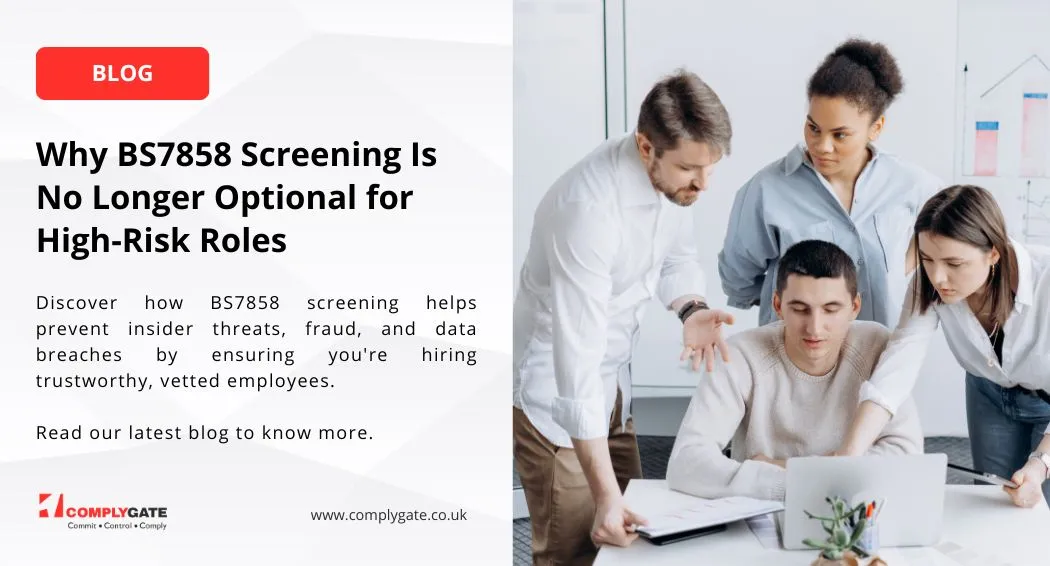Pre-employment Screening and Key Checks Involved
What is pre-employment screening?
Pre-employment screening, also known as background screening, is the process of validating a job applicant's qualifications and ensuring that all the job requirements are met.
Pre-employment screening aims to gather information on potential or current employees and ensure that the data is correctly analysed to identify individuals who may pose a security risk.
Key Background Checks involved
Employers should adjust the pre-employment screening process to the risks posed by a specific job profile. Some of the background checks conducted by employers are:
Credit Check
Credit checks assess a person's financial standing and reveal their borrowing history, bankruptcies, county court judgements, individual voluntary arrangements (IVA), etc. These checks can be a regulatory requirement or an assessment of the candidates' suitability for the role.
International Credit Check
This check includes screening candidates working or living overseas since a UK credit check may not show complete information. International credit checks assess the same grounds as a UK credit check, i.e., the financial standings of a person.
DVLA Checks
If the employers have not taken any action to minimise the risk, they can be held liable for accidents caused by employees driving for work. Therefore, employers need to check for a driving license if required.
Criminal Record Checks (UK & Overseas)
Criminal background checks can be a regulatory requirement for the role to be filled by the candidate. These checks disclose all details related to convictions and cautions on a candidate. There are three types of checks in the UK, basic, standard and enhanced. The type of check conducted depends on the requirement. These checks can be repeated internationally, to the extent of the law.
Compliance Database Check
These checks search various law enforcement, financial and regulatory databases across the UK and international countries and disclose whether a candidate appears on any blacklists or high-risk shortlists. Conducting compliance database checks aims to reveal politically exposed persons (PEP), money laundering, fraud, terrorism, and other risks.
Employment History and References
References are obtained from previous employers, which helps employers have confidence in a candidates' abilities and standings. These checks also help identify and discuss gaps in a candidate's employment history.
Cifas Checks
Cifas checks help employers avoid organised crime and dishonest individuals using the Internal Fraud Database (IFD) and National Fraud Database (NFD).
Adverse media and Social media searches
Adverse media search thoroughly crawls the UK and international media to find any negative references to the candidate.
Social media searches complement adverse media searches by assessing open-source and publicly available data.
Electoral Roll Check
This check is conducted alongside the UK credit check and ensures that the address provided by the candidate is valid.
Regulatory Body Checks
These checks search against the concerned regulatory body to reveal any issues in a candidate's professional career.
Directorship Check UK
These searches show if a candidate has held a directorship position in the past or has been banned from the role due to regulatory or legal issues. A candidate's honesty and integrity are reflected if he/she is unable to provide employers with this information.
International Directorship Check
These checks search international databases for candidates who have worked abroad and cannot reveal full data through the UK directorship checks.
Local language and adverse media searches
Media searches are also conducted across local language issuings to find any negative references.
Comparing the CV
A candidate's CV is compared to the candidate screening form submitted by them. This helps employers in ensuring that the information put in is legitimate.
Gap Analysis
These checks identify and analyse gaps in a candidate's career history. By ensuring that both gaps and employment periods are fully referenced, employers can get an extensive overview of the candidate's background.
Educational Verification
This verification includes checking a candidate's academic records. It is conducted to reveal their academic standing and confirm that the information provided is legitimate.
Conclusion
Pre-employment screening is a critical feature of today's hiring process that should not be overlooked. Failing to verify the information provided by candidates prior to hiring them is the employer's responsibility, and failure to do so may result in penalties, legal charges, and company defamation.
Book a one-to-one demo to learn about pre employment screening / background checks and determine if Complygate is the best screening provider for you.











